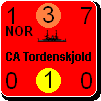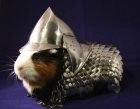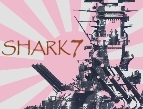Erkki
Posts: 1461
Joined: 2/17/2010
Status: offline

|
quote:
ORIGINAL: crsutton
I admit that I pulled this directly from Wiki, but sometimes the people writing for Wiki know their stuff.
Yeah, I would have to say it was the pilots in this case. And the fact that the Buffalo was at least a marginally better fighter than the I15 and I16 fighters that it was facing during this period. The kill ratio that you cite is for a period early in the war. It does not apply to the whole war. The Red Air force got fairly proficient at killing both German and Finnish pilots as the war progressed. And an average pilot in a Yak 3 would probably eat up a good pilot in a Buffalo
Attacking Soviet Air Force pilots using formulaic defensive tactics, many Finnish pilots racked up enormous scores on the Finnish front. The default tactic was the four-plane "parvi" (swarm) with a pair flying low (but visible, not too close to the terrain) as the bait and a pair flying high to dive on the eventual interceptors. In the long run, the Soviet Air Force on the Finnish front never developed an efficient approach to counter this tactic. According to some reports, this tactic also inspired the German Luftwaffe's kette.[citation needed] Most of the pilots of Lentolaivue 24 were Winter War combat veterans. This squadron achieved total of 459 Soviet aircraft kills with B-239s, while losing 15 Buffalos in combat.[6]
While the remarkable Finnish accomplishments in the Buffalo are undeniable, aviation historian Dan Ford points out that Stalin's purges and recent expansion of the Soviet Air Force resulted in many new inexperienced pilots while simultaneously discouraging combat initiative. The result was pilots who failed to scan the airspace behind them, and also Soviet air formations that held their positions in defensive circles while the diving Finnish pilots picked them off one-by-one. The Soviet fighter aircraft used in the early years on the Finnish front also included some obsolescent models such as the Polikarpov I-15 and I-153. After the end of hostilities, Karhunen, the captain and commander of the 3rd flight of LeLv 24, recalled:
"The Brewster model 239 was good against the older Russian fighters, Polikarpov I-153 Chaika (Gull) and I-16. Hence the period 1941–42 was the best time for us. In 1943 it was already significantly more difficult when the Russians began to use their newer fighters against us... Later, with the Yaks, Hurricanes, Tomahawks, LaGG-3 and MiGs, it became a fight to the death."[42]
Ack, I think I am hijacking my own thread...
Both pilots and hardware. The Leningrad front was a kind of a secondary front to the Soviets, and they would not send their best hardware there until March 1943(the same month LeLv34 was founded and received its first Bf 109s) in the form of 3rd Guards regiment that had 1 of its 3 squadrons equipped with Lavochin La-5, and later another regiment in Leningrad air defense. And while Magnusson's LeLv24 had mostly well trained veteran pilots, same could not be said about the Soviets. Even later in the war with clearly better aircraft(La-5, P-39N and Yak-9; Yak-3 was only used against Germans and in relatively small numbers) they lacked the individual pilots' skill, tactics and organisation to fully exploit them. Even the La-5s of the 3rd Guards managed to shoot just a single 109 of the LeLv34, in a bad weather radar and GCI guided ambush...
In late Spring of 1944 the Soviets had over 1,000 aircraft between the front and Leningrad vs. 6 Finnish 109s in at Suulajärvi - and the B-239 had been pulled from frontline use as LeLv24's last wings had received Bf 109s. On the other hand, P-36s that were as numerous as Buffaloes, served in the fighter role until the end of the war, and they didnt do much worse, really. 
_____________________________
|
 Printable Version
Printable Version













 ) Even the Finns admitted that once they came up against better Soviet fighters, (Yaks, P40s and Migs) the playing field got very level. It was not the plane in this case but the pilots.
) Even the Finns admitted that once they came up against better Soviet fighters, (Yaks, P40s and Migs) the playing field got very level. It was not the plane in this case but the pilots. 






 So I think he does have some insight and access to primary sources.
So I think he does have some insight and access to primary sources.  New Messages
New Messages No New Messages
No New Messages Hot Topic w/ New Messages
Hot Topic w/ New Messages Hot Topic w/o New Messages
Hot Topic w/o New Messages Locked w/ New Messages
Locked w/ New Messages Locked w/o New Messages
Locked w/o New Messages Post New Thread
Post New Thread